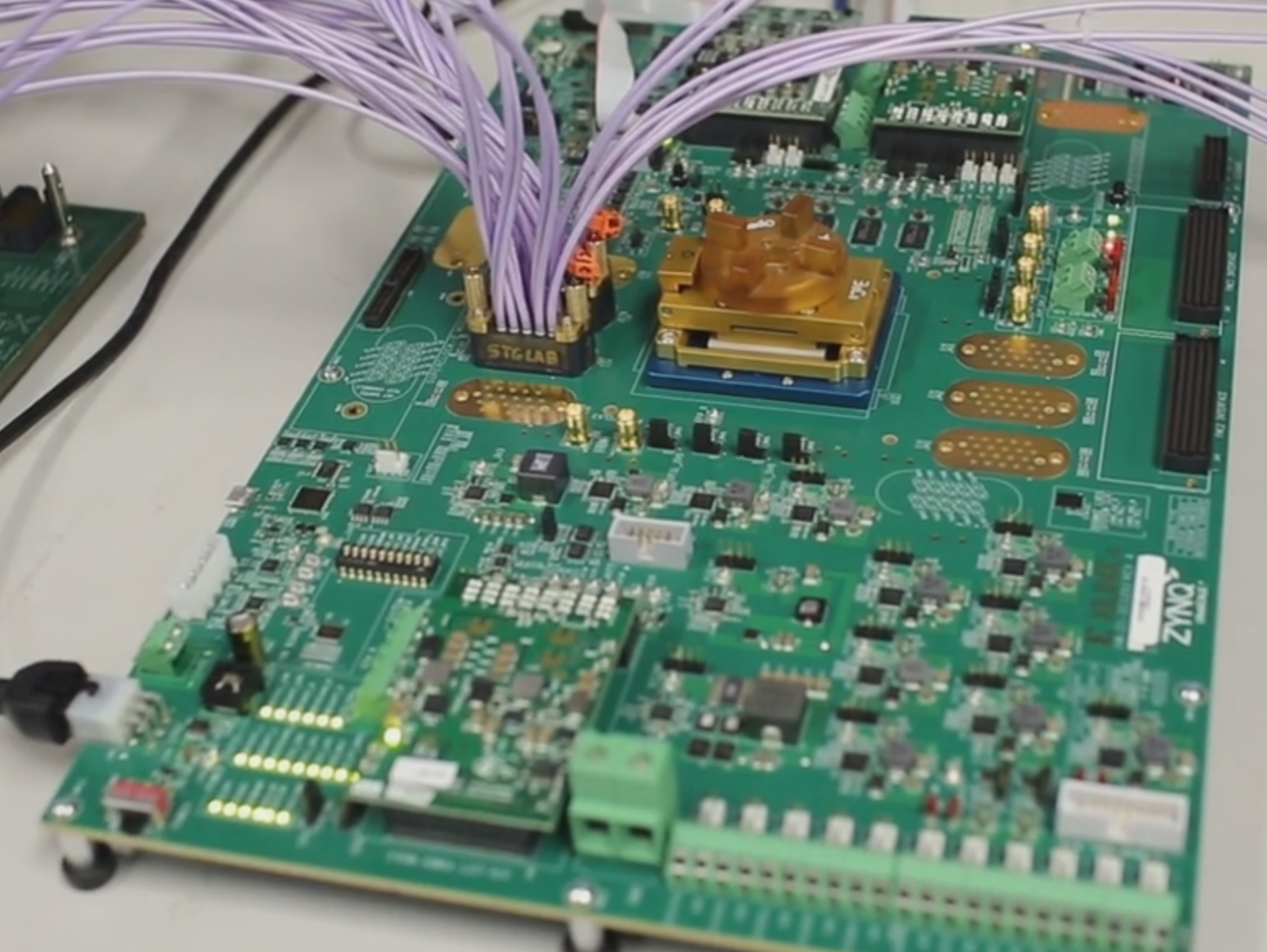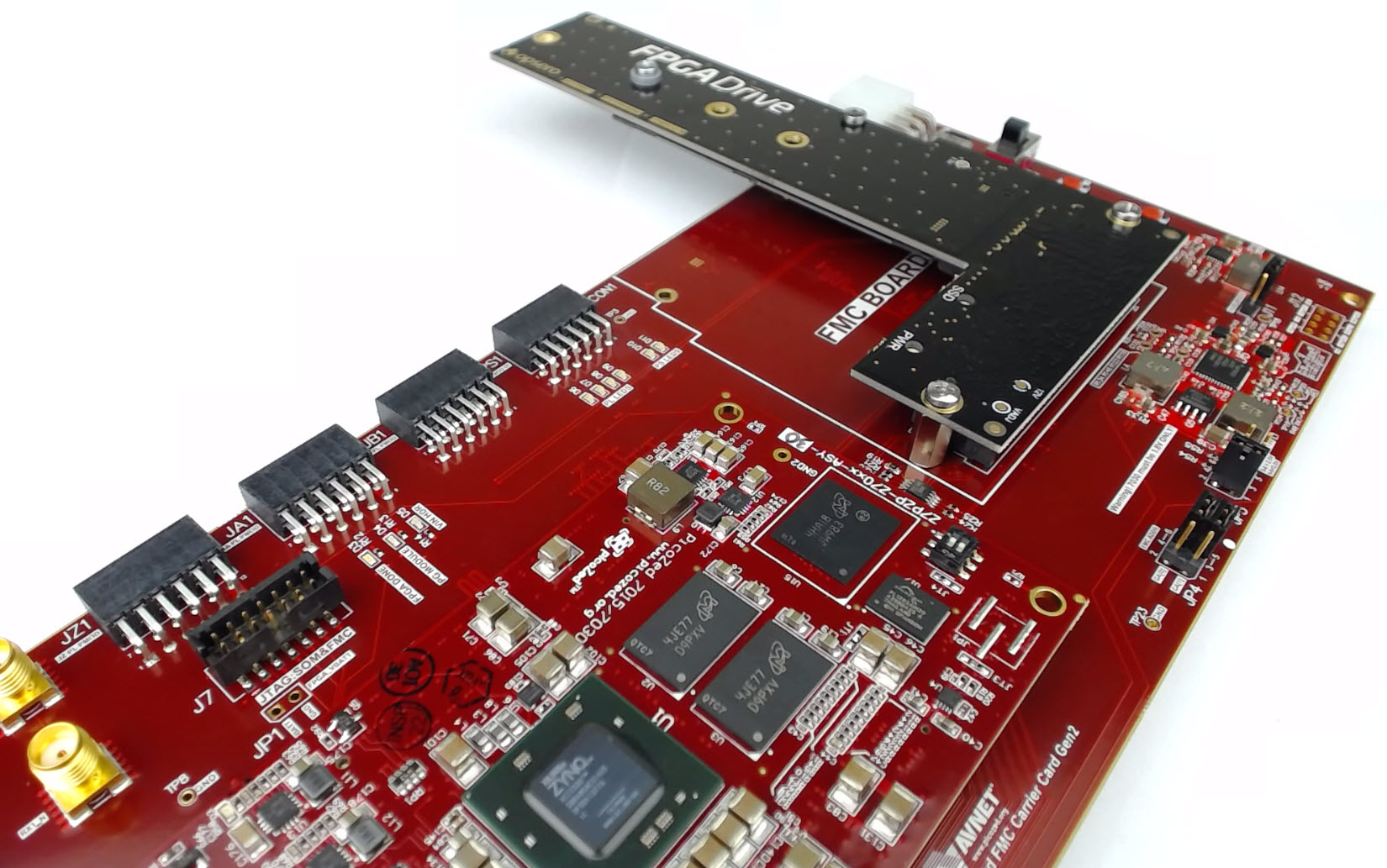In this video I create a simple Vivado design for the MYIR Z-turn Zynq SoM and we run a hello world application on it, followed by the lwIP echo server. We connect the Z-turn to a network, then we use “ping” and “telnet” to test the echo server from a PC that is connected to the same network.
If you want to try it out yourself, download the SD card boot files here:
[Read More]
Connecting an M.2 SSD to FPGA Drive FMC
Just released a video showing how to connect an M.2 SSD to the FPGA Drive FMC.
FPGA Drive now available to purchase

Orders can now be placed for the FPGA Drive products on the Opsero website. Both the PCIe and FMC versions allow you to connect an M.2 PCIe solid-state drive to an FPGA development board and both can be purchased at the same price of $249 USD (solid-state drive not included).
The PCIe version has an 8-lane PCIe edge connector for interfacing with the PCIe blade (aka. goldfingers) of an FPGA development board.
[Read More]
M.2 NGFF Loopback Module
Update 2018-05-03: You can now buy a basic M.2 NGFF loopback module from Opsero
Half the fun of making cool stuff is sharing it with others. The photos I’m sharing in this post are of my new M.2 NGFF loopback module - it’s a M.2 form-factor module with a loopback on each of the 4 PCIe lanes, as well as some electronics to test other connections such as the 3.3V power supply and the 100MHz clock.
[Read More]
At last! Affordable and fast, non-volatile storage for FPGAs

Let me introduce you to Opsero’s latest offering: FPGA Drive FMC, a new FPGA Mezzanine Card that allows you to connect an NVMe PCIe solid-state drive to your FPGA.
There’s got to be a better way. In the past, if you were developing an FPGA based product that needed a large amount of fast non-volatile storage, the best solution was to connect a SATA drive. Physical interfacing was pretty simple because all you needed was one gigabit transceiver.
[Read More]
Bye bye Platform Cable USB II, Hello JTAG HS3

Now that I think about it, I’ve been using my Xilinx Platform Cable USB II for 10 years now!!! That’s a terrific run in my opinion, I got it in a kit for the Virtex-5 ML505 board in 2006 and I would have kept using it if I didn’t start getting these strange error messages recently. So from a recommendation, I got myself a JTAG HS3 from Digilent and it is just ridiculously better.
[Read More]
Breakout the Zynq Ultrascale+ GEMs with Ethernet FMC

Did you know that the Zynq Ultrascale+ has 4 built-in Gigabit Ethernet MACs (GEMs)? That makes it awesome for Ethernet applications which is why I’ve just developed and shared an example design for the Zynq Ultrascale+ ZCU102 Evaluation board, armed with an Ethernet FMC to break-out those handy GEMs. The ZCU102 board has two FMC connectors, both high-pin-count (HPC), so I’ve created one basic design with two sets of constraints to choose from, depending on which FMC connector you want to use.
[Read More]
FMC for Connecting an SSD to an FPGA

Here’s a first look at the FMC version of the FPGA Drive product, featured with the Samsung VNAND 950 Pro SSD. The FMC version can carry M-keyed M.2 modules for PCI Express and is designed to support up to 4-lanes. It has a HPC FMC connector which can be used on a LPC FMC carrier for a single-lane connection to the SSD, or a HPC FMC carrier to exploit the maximum throughput of a 4-lane connection.
[Read More]
Avnet releases PicoZed FMC Carrier Card V2
For those of you who were interested in running my recent tutorials about connecting a PCIe SSD to the Zynq (Zynq PCI Express Root Complex design in Vivado and Connecting an SSD to an FPGA running PetaLinux) you’ll be happy to know that Avnet has released the PicoZed FMC Carrier Card V2, which is the platform on which those tutorials were based.
For more information about the new PicoZed carrier, check out their video - and keep an eye out at 1m:32s where the Ethernet FMC gets a mention!
[Read More]
Connecting an SSD to an FPGA running PetaLinux

This is the final part of a three part tutorial series on creating a PCI Express Root Complex design in Vivado and connecting a PCIe NVMe solid-state drive to an FPGA.
Part 1: Microblaze PCI Express Root Complex design in Vivado
Part 2: Zynq PCI Express Root Complex design in Vivado
Part 3: Connecting an SSD to an FPGA running PetaLinux (this tutorial)
In this final part of the tutorial series, we’ll start by testing our hardware with a stand-alone application that will verify the status of the PCIe link and perform enumeration of the PCIe end-points.
[Read More]